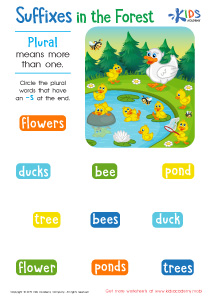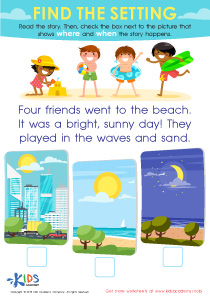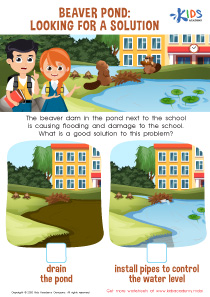Easy Matching worksheets activities for Ages 3-7
7 filtered results
-
From - To
Discover our engaging Easy Matching Worksheets designed for children ages 3-7! These fun activities enhance logical thinking and visual recognition skills while keeping young learners entertained. Each worksheet features colorful images and simple prompts, perfect for developing hand-eye coordination and cognitive abilities. Our resources are ideal for parents and educators looking for creative ways to support early childhood learning. With a variety of themes, these matching worksheets not only make learning enjoyable but also help nurture essential skills needed for success in school. Explore our extensive collection today and watch your child's confidence and abilities grow!
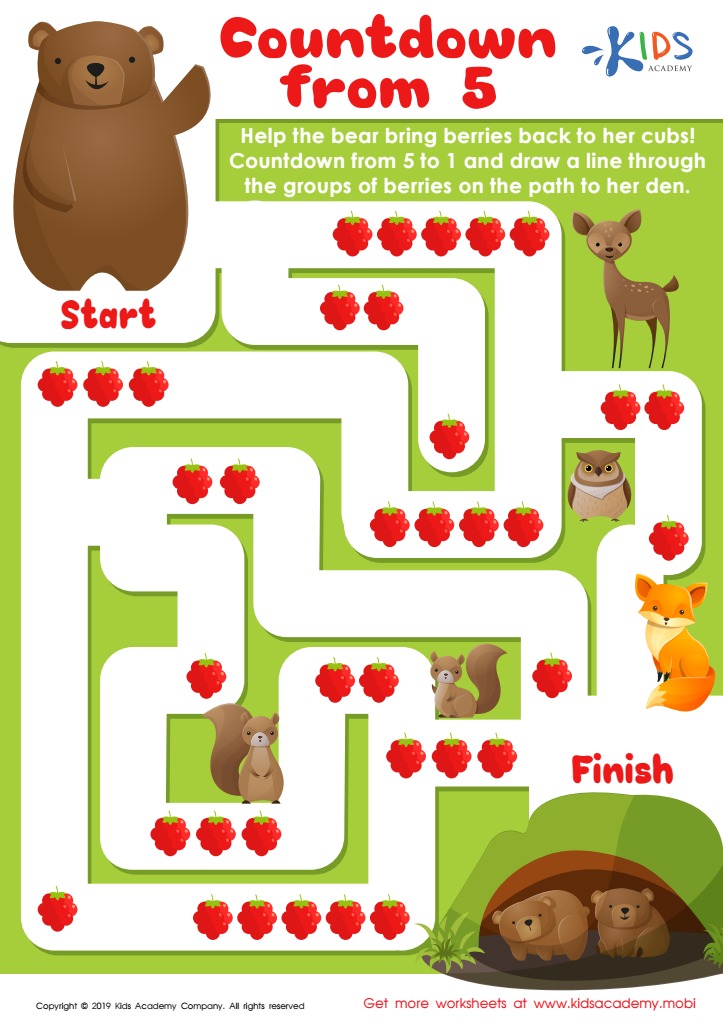

Countdown from 5 Worksheet
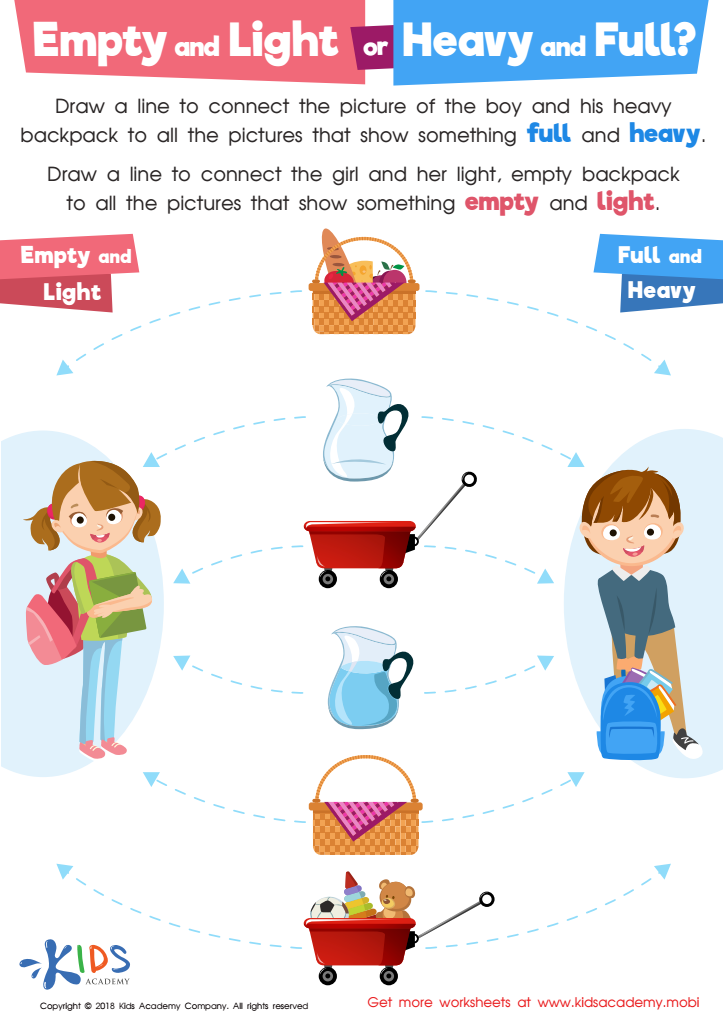

Empty and Light or Heavy and Full? Worksheet
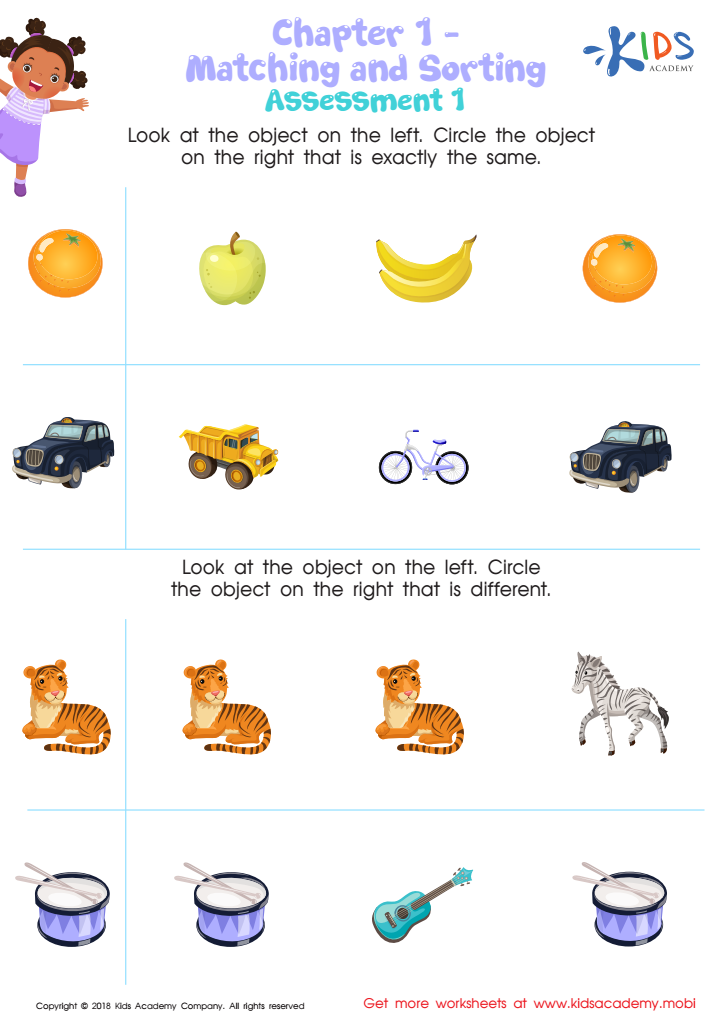

Matching and Sorting for Preschool: Assessment 1 Worksheet
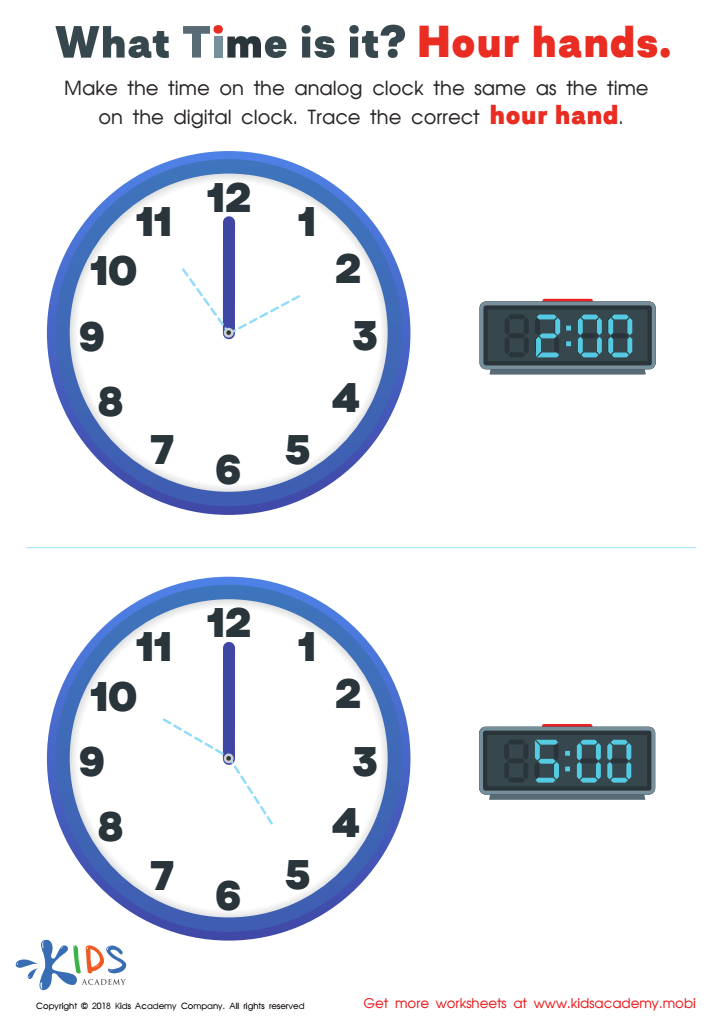

What Time Is it? Hour Hands Worksheet


Colorful Arrays Bingo Worksheet
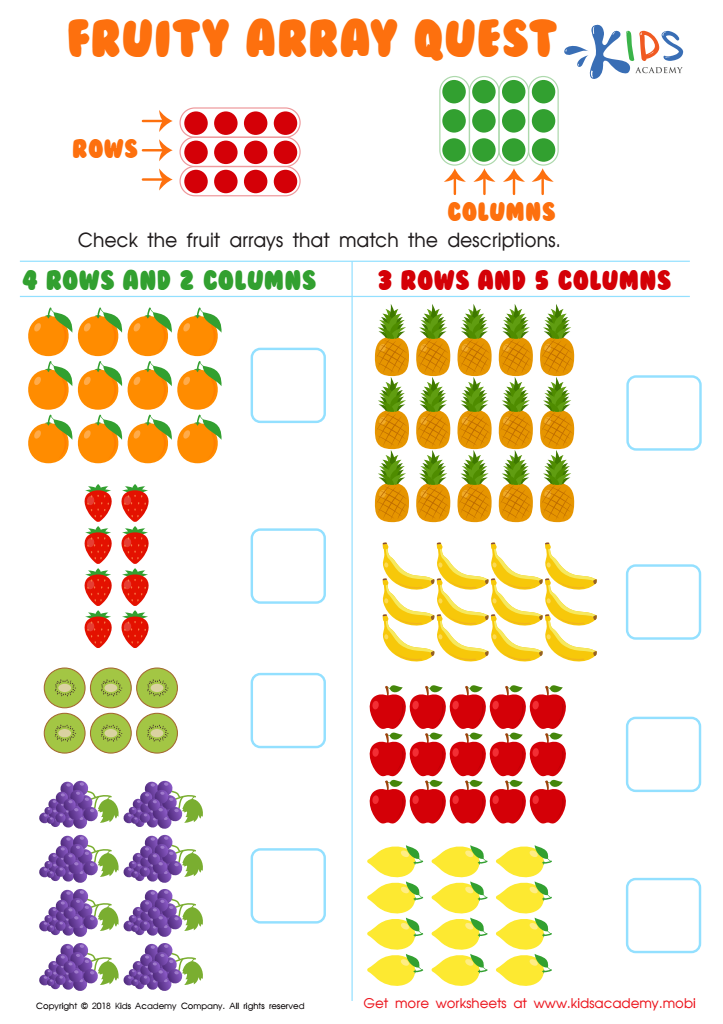

Fruity Array Quest Worksheet
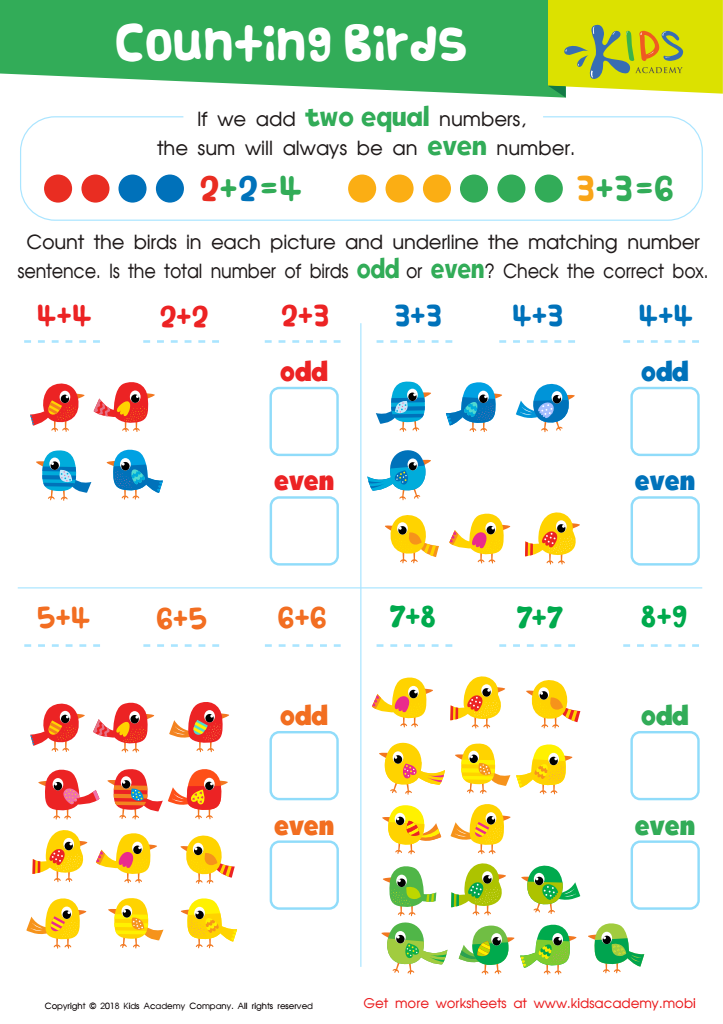

Counting Birds Worksheet
Easy Matching activities for children ages 3-7 play a crucial role in early childhood development and education. These activities focus on simple matching tasks that help enhance cognitive skills, such as memory, recognition, and critical thinking. When children engage in these exercises, they not only sharpen their observation abilities but also develop important problem-solving skills.
Parents and teachers should prioritize Easy Matching activities as they foster language development, as children often describe images or items while matching, promoting vocabulary expansion. Additionally, these activities encourage social skills when done in cooperative settings, allowing children to work alongside peers and practice collaboration.
Furthermore, Easy Matching activities can be tailored to different learning styles and can be integrated into diverse subjects, from literacy and math to science and art. This versatility makes them a valuable tool for educators and parents alike. Engaging children in such playful learning experiences can spark their interest in education, making them eager learners. Ultimately, by incorporating Easy Matching activities into a child’s routine, caregivers can provide a balanced approach to learning that nurtures curiosity, creativity, and foundational skills necessary for future academic success.
 Assign to My Students
Assign to My Students


%20(1).jpg)






